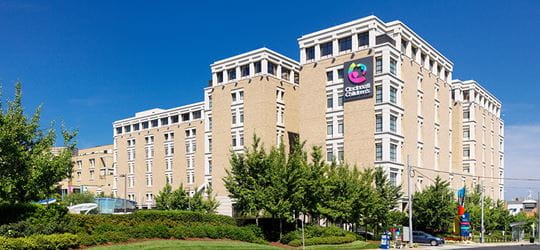
Steve W. Wu, MD
- Director, Movement Disorder Clinic and Tourette Syndrome Clinic
- Director, Pediatric Movement Disorders Fellowship
- Professor, UC Department of Pediatrics
- steve.wu@cchmc.org
- Board Certified
About
Biography
As a pediatric neurologist, I use different treatment options to help my patients regulate their abnormal motor movements. I care for patients in the Dystonia/Deep Brain Stimulation Clinic at Cincinnati Children’s.
First, I like to hear from patients and their parents about how involuntary movements affect their quality of life. I then use that information to help create a care plan for each patient. Treatment possibilities for movement disorders may include psychological and behavioral therapy, oral medications, botulinum toxin (Botox) injections and deep brain stimulation.
From a research perspective, my interests focus on movement disorders, neurophysiology and the neuroplasticity of the brain. I am interested in how people control and carry out normal movements. I’m working to figure out the physiological properties associated with the control of motor movements.
I have received research grants from the Tourette Association of America and collaborated on different projects funded by the National Institutes of Health.
In my free time, I like to enjoy sunshine and warm weather.
BA: University of California, Berkeley, CA, 1997.
MD: Vanderbilt University, Nashville, TN, 2003.
Residency: Pediatrics and Pediatric Neurology, Cincinnati Children’s, Cincinnati, OH, 2003-2008.
Fellowship: Pediatric Movement Disorders, Cincinnati Children’s, Cincinnati, OH, 2008-2009.
Interests
Pediatric neurology with specialty in pediatric movement disorder; botulinum toxin (Botox) injection for dystonia, spasticity, tics; deep brain stimulation (DBS); AADC (aromatic L-amino acid decarboxylase) deficiency
Interests
Neuroplasticity; movement disorders; transcranial magnetic stimulation (TMS); deep brain stimulation (DBS); electroencephalography (EEG); electromyography (EMG)
Research Areas
Additional Languages
Chinese, Mandarin, Taiwanese MandarinLocations (2)
Insurance Information
Cincinnati Children's strives to accept a wide variety of health plans. Please contact your health insurance carrier to verify coverage for your specific benefit plan.
Publications
Reliability of short interval cortical inhibition in children with attention deficit hyperactivity disorder. Clinical Neurophysiology. 2025; 175:2110750.
Frontal cortex hyperactivation and gamma desynchrony in Fragile X syndrome: Correlates of auditory hypersensitivity. PloS one. 2025; 20:e0306157.
Probing the Neurodynamic Mechanisms of Cognitive Flexibility in Depressed Individuals with Autism Spectrum Disorder. Journal of Child and Adolescent Psychopharmacology. 2025; 35:231-243.
In children with attention‐deficit/hyperactivity disorder, less task‐related up‐modulation of motor cortex during response inhibition. 2025; 3:26-36.
Accelerated Theta Burst Transcranial Magnetic Stimulation for Refractory Depression in Autism Spectrum Disorder. Journal of Autism and Developmental Disorders. 2025; 55:940-954.
Long-term safety of dexamethasone sodium phosphate encapsulated in autologous erythrocytes in pediatric patients with ataxia telangiectasia. Frontiers in Neurology. 2025; 15:1526914.
Deep brain stimulation modulates pallidal and cortical aperiodic activity during a motor task in children and young adults with dystonia. Brain Stimulation. 2025; 18:520.
Long-read sequencing and optical genome mapping identify causative gene disruptions in noncoding sequence in two patients with neurologic disease and known chromosome abnormalities. American Journal of Medical Genetics, Part A. 2024; 194:e63818.
Post Deep Brain Stimulation Time Course of Aperiodic Activity in Childhood and Young Adult Dystonia. Movement Disorders Clinical Practice. 2024; 11:1305-1307.
Safety and efficacy of intra-erythrocyte dexamethasone sodium phosphate in children with ataxia telangiectasia (ATTeST): a multicentre, randomised, double-blind, placebo-controlled phase 3 trial. Lancet Neurology. 2024; 23:871-882.






Patient Ratings and Comments
All patient satisfaction ratings and comments are submitted by actual patients and verified by a leading independent experience management company, Qualtrics. Patient identities are withheld to ensure confidentiality and privacy. Only those providers whose satisfaction surveys are administered through Cincinnati Children’s Hospital Medical Center are displayed. Click here to learn more about our survey